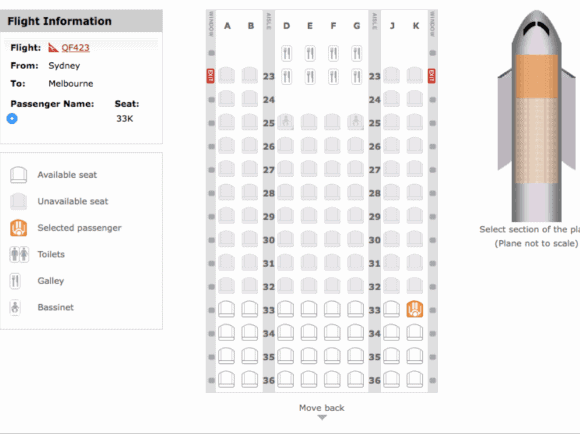Seat Maps Are NOT Reliable Indicators of Flight Loads

Airline passengers often try to predict how full a flight will be for a variety of reasons. For example, it may give an indication of how likely an upgrade is to clear. Or, if you know that your flight will be full (or empty), it may influence your choice of seat selection. But is there a way to accurately predict the loading of an upcoming flight?
Many people try to determine the number of seats sold on a given flight by counting the number of seats showing as occupied on the airline seat map. But the seat map is not an accurate measure of how full the flight will be. Just because a seat map shows lots of empty seats, doesn’t mean there are necessarily any unsold seats on the plane. Conversely, a seat map showing very few vacant seats does not necessarily indicate a fully-booked flight.
This is a common misconception that we often see on our online forums, among other places.
Empty seat maps don’t necessarily mean empty flights
Even if you see a seat map that shows lots of vacant seats, the flight could still be full. The reason for this is simple: not everybody selects a seat at the time of booking. This is especially the case with airlines that charge additional fees for seat selection.
This can change when online check-in opens. This is usually around 24-48 hours before departure, depending on the airline. At this time, any passengers that have not already selected a seat will be automatically assigned one. This is known as “theoretical seating”, and at some airlines, passengers with higher status will automatically be assigned the best available remaining seats.
But, even after each passenger has been assigned a seat, the seat map still might not tell the full story. That’s because, particularly on less full flights, high-status passengers may have the seats next to them blocked. The blocked seats will show as occupied or unavailable on the seat map, but nobody is actually sitting there.
Blocked seats can also make a flight look more full than it is before online check-in opens. If you have Bronze status with Qantas, for example, the front half of the plane on a Qantas seat map will probably appear to be fully occupied. But in reality, the seats are just unavailable to you as a Bronze member.
How to determine how full your flight will be
A better way to predict a flight’s loading is to conduct a “Flight Availability” search on Expert Flyer. If you’re able to interpret the fare class data, this information can tell you quite a lot about how full a flight will be. If there are many seats available for sale in the lower fare classes, for example, then the flight is probably fairly empty. But if there are only a few seats left for sale – and only in the most expensive fare classes – then the flight is probably quite full.
If you don’t have an Expert Flyer subscription, you can ask another AFF member to check flight availability information for you. See our dedicated AFF Help Desk forum.
In reality, though, only the airline can know the true situation. Even if there are 3 Economy seats available for sale on a given flight, for example, it may actually be oversold. It’s possible that the airline might be willing to sell those three seats as they intend to bump-up some of the Economy passengers to Business, or because they’re expecting some of the booked passengers not to show up – and not because there are three empty seats.
So, unless you have access to the airline’s internal systems – which aren’t made available to the public – you can never be 100% sure until you’re actually on board the plane. Either way, one thing is for sure: airline seat maps tell you almost nothing about how full the flight is.
